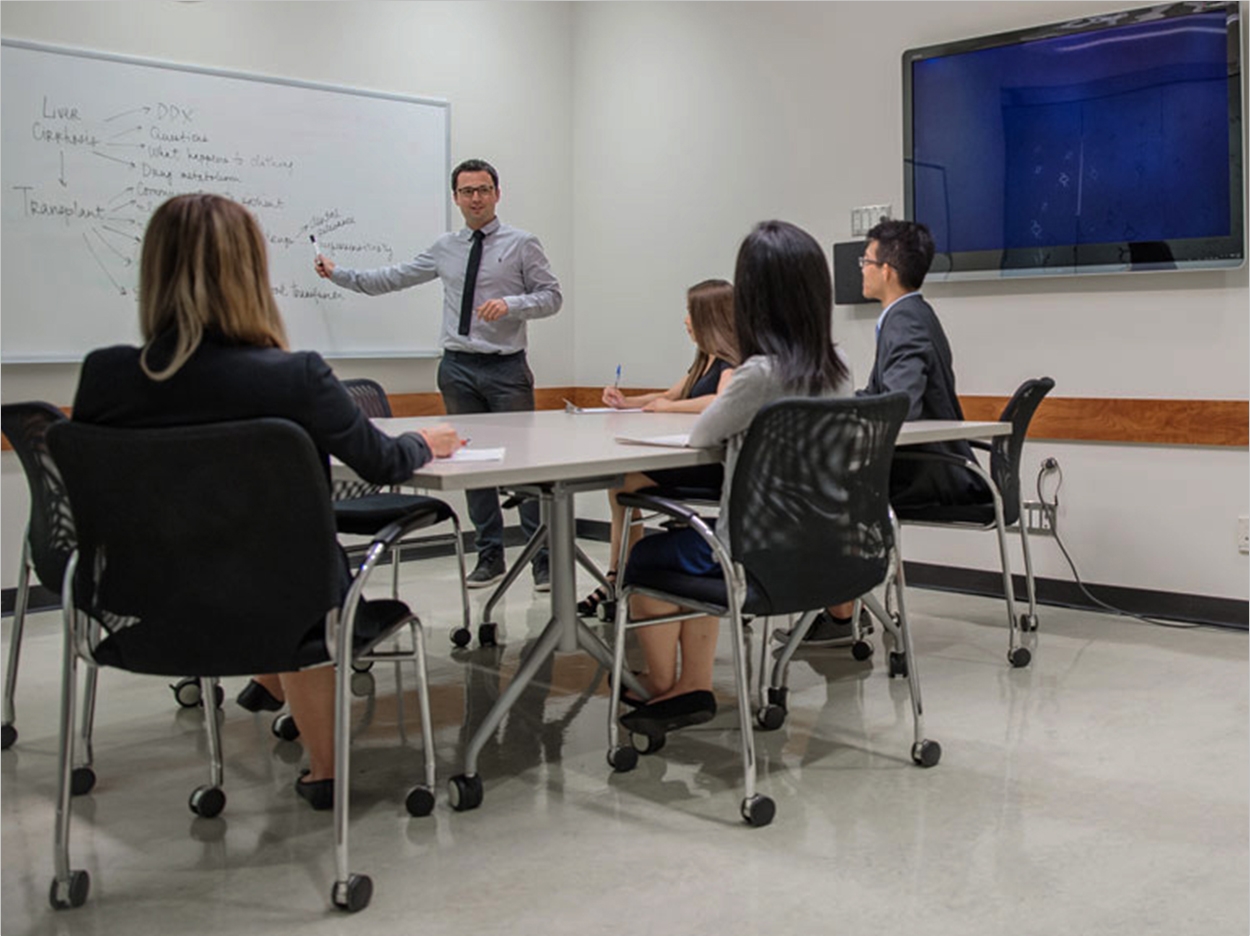
Students in the Faculties of Medicine and Dentistry at the University of British Columbia used to take a joint biomedical curriculum, even though a 2010 assessment of the program found that only 47% of the material was “need to know.” Since then, the school has been restructuring its entire program year by year with more interactive learning via technology-assisted discussions.
The first-year curriculum was updated in the 2015/2016 academic year as faculty agreed that lengthy lectures didn’t work and that class time needed to be more meaningful. Students now pre-read their assignments and review learning materials during time specifically allotted for independent study. In the classroom, faculty engage students in discussions and by using clicker quizzes, where students use handheld devices to respond to professor questions.
The school also has added more dentally relevant problem- and case-based learning so students can apply their knowledge. By including more oral health-related contexts, the curriculum team aims to create a more relevant and engaging experience for students. Students also get clinical work in the first term of their first year for more hands-on experience.
Via the PeerWise app, students generate multiple-choice questions and then rate and comment on questions submitted by other students. Questions must be original and made up by the students themselves. They can be written to be easy, challenging, or beyond the scope of their knowledge, though questions ideally should be written to be just above the level of the students’ knowledge.
“It enhances the students’ learning when they are encouraged to research content to create questions,” said Leandra Best, DMD, associate dean of academic affairs, who also noted that while some faculty have trouble writing good questions, some students excel at it—and those well written questions may be appropriated later. “An incentive for students to create meaningful, good questions is knowing that these questions might be used in their final exams.”
The changes in learning also required changes in how that learning was being measured, which can be difficult in professional schools like dental schools that focus on competency-based education. Supported by a Teaching and Learning Enhancement Fund grant, the school turned to progress surveys.
“If we’re going to have a new curriculum, we also need to have a new assessment system,” said associate professor HsingChi von Bergmann, MSc, PhD.
Progress surveys are 200-item multiple choice exams given to all four years of DMD students simultaneously twice a year. They map where students are in their preparation in becoming a dentist. These surveys are designed to help students understand what cognitive knowledge is required in a competent professional.
“Once they’re finished in the professional school, what is the knowledge that is required of them for us to say that they are competent?” asked von Bergmann.
The faculty examined dental competency documents from Canada and the United States to create the progress surveys. The blueprint for the test was a grid, with horizontal rows representing different dental areas, and columns representing the assessment of patients. Where the cells crossed, the faculty discussed what the knowledge would look like.
Faculty members then voted on the competencies they thought were most important for dentists to know. The surveys are independent of curriculum, as the blueprint measures end-point learning outcomes and does not fluctuate much. While first-year students will have little cognitive knowledge, the faculty hopes they will have 100% mastery by their final year.
“The directive is that you don’t need to prepare for it, because it benchmarks your own progress. It’s cognitive knowledge—you know it or you don’t,” said von Bergmann. “Once the report card [for the progress survey] is out, [students] can look at their own domains and compare it to the class average.”
The progress survey helps to promote dialogue among the curriculum planning committee. However, the school does note that capturing the extent of the students’ knowledge is challenging in a 200-item survey. Creating new questions also can be difficult, though PeerWise may help there too. The faculty also hopes that the survey will encourage students who scored lower than average to seek further help in areas where they are struggling.
“I have received emails from students from time to time after report cards were sent out, and the fourth-year students… always say, ‘This is really, really helpful, because it gives me a wakeup call. I’m going to take the board exam, and I’m not sure I’m ready yet,” said von Bergmann.
Student feedback has been positive so far, the school reports, and the team will continue to use it as it works on creating the new third-year curriculum. Best notes that collaboration and consensus have been essential in developing these changes. She also says that the renewal has made the faculty more cohesive and aware of each other’s work.
“It’s been an opportunity for faculty to re-evaluate and determine discipline-related benchmarks at the end of each year of the program,” said Best. “Likewise, students are seeing results of their feedback.”
“Education itself is a discipline. To understand curriculum, to understand teaching, to understand assessment, these all take time,” said von Bergmann, who hopes that more evidence-based thinking will be brought into curriculum planning. “Education is not soft science. Education can also be scientific.”
The team won the top prize last summer for its poster presentation at the American Dental Association Commission on Change and Innovation in Dental Education and hopes the impact of the progress surveys can be scaled up with expansion to dental schools throughout Canada.
“It’s been a great opportunity to improve the education for our students,” Best said. “It’s exciting to know that there’s lessons learned that we’ve gone through that might help others as well.”
Related Articles
Virtual Reality “Flips” Dental School Lectures
Live Education Still Matters in an Online World
Common Red Flags for Continuing Education in Dental Sleep Medicine












